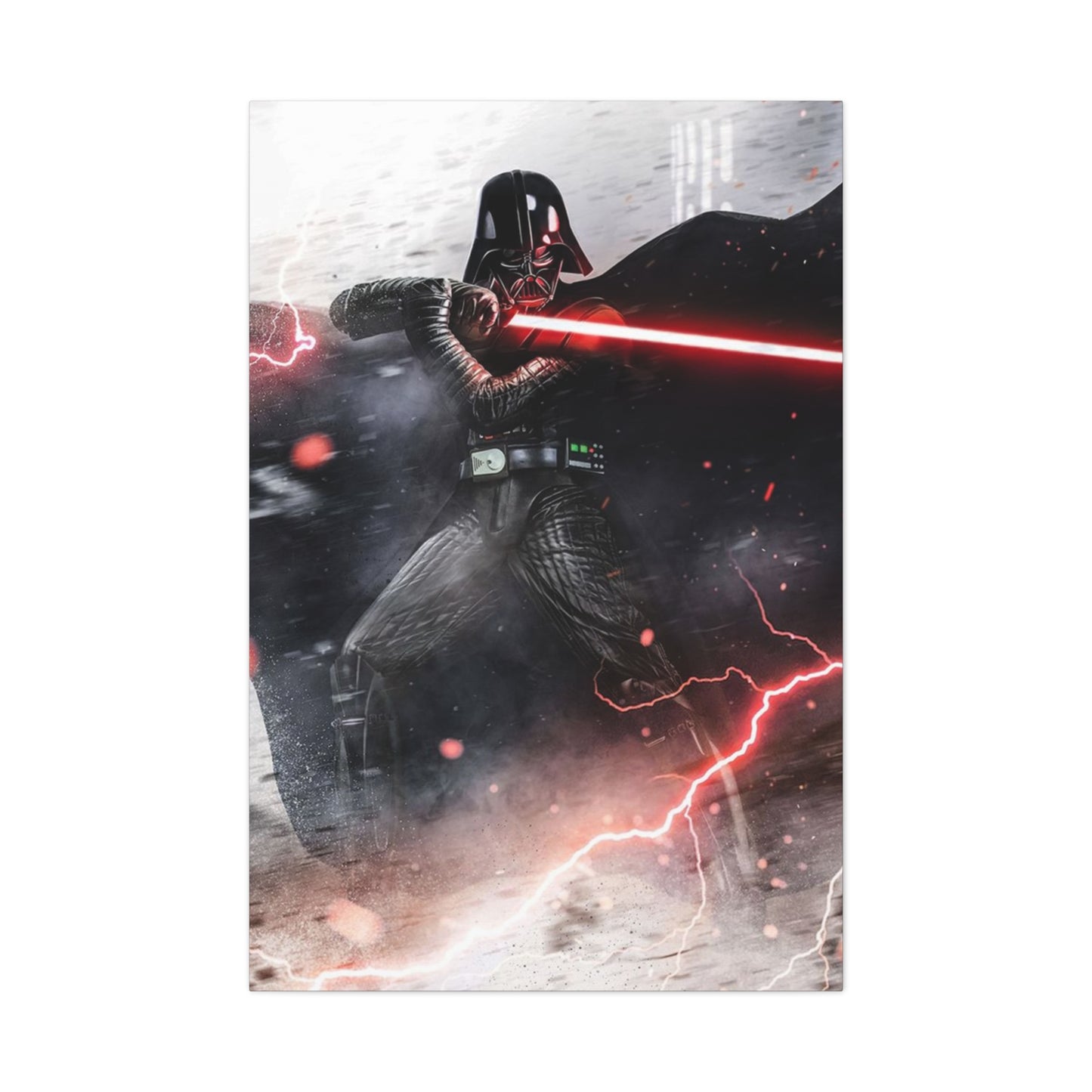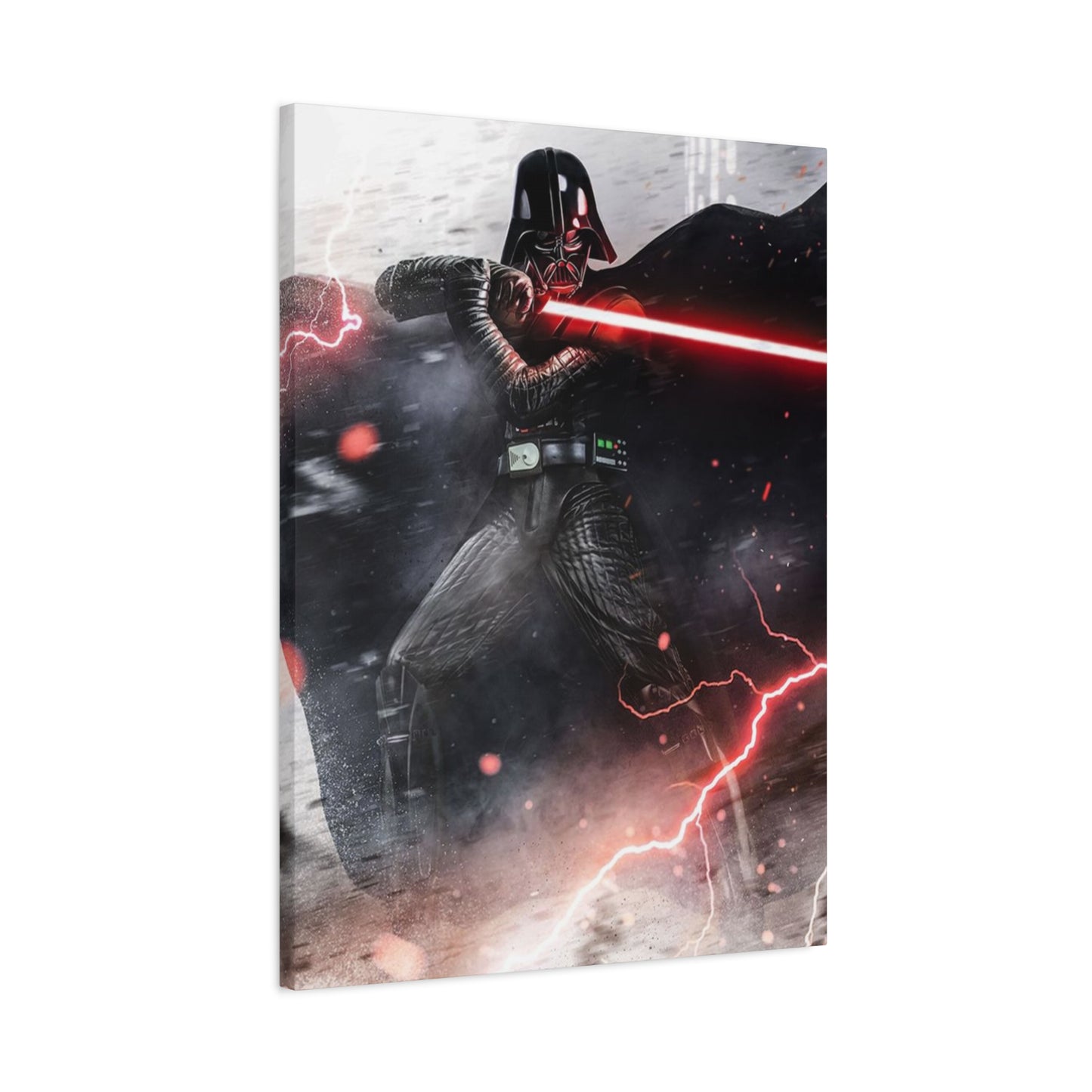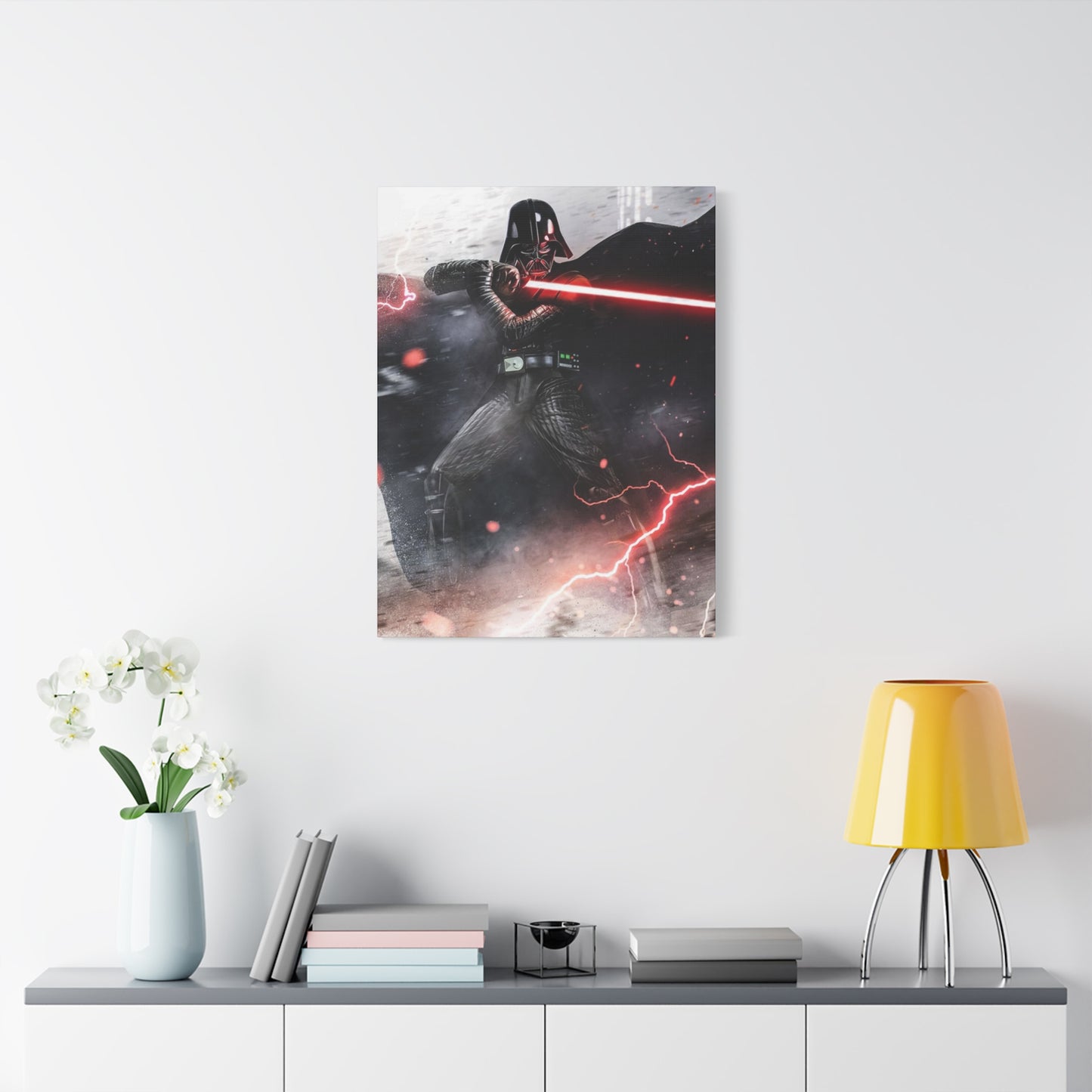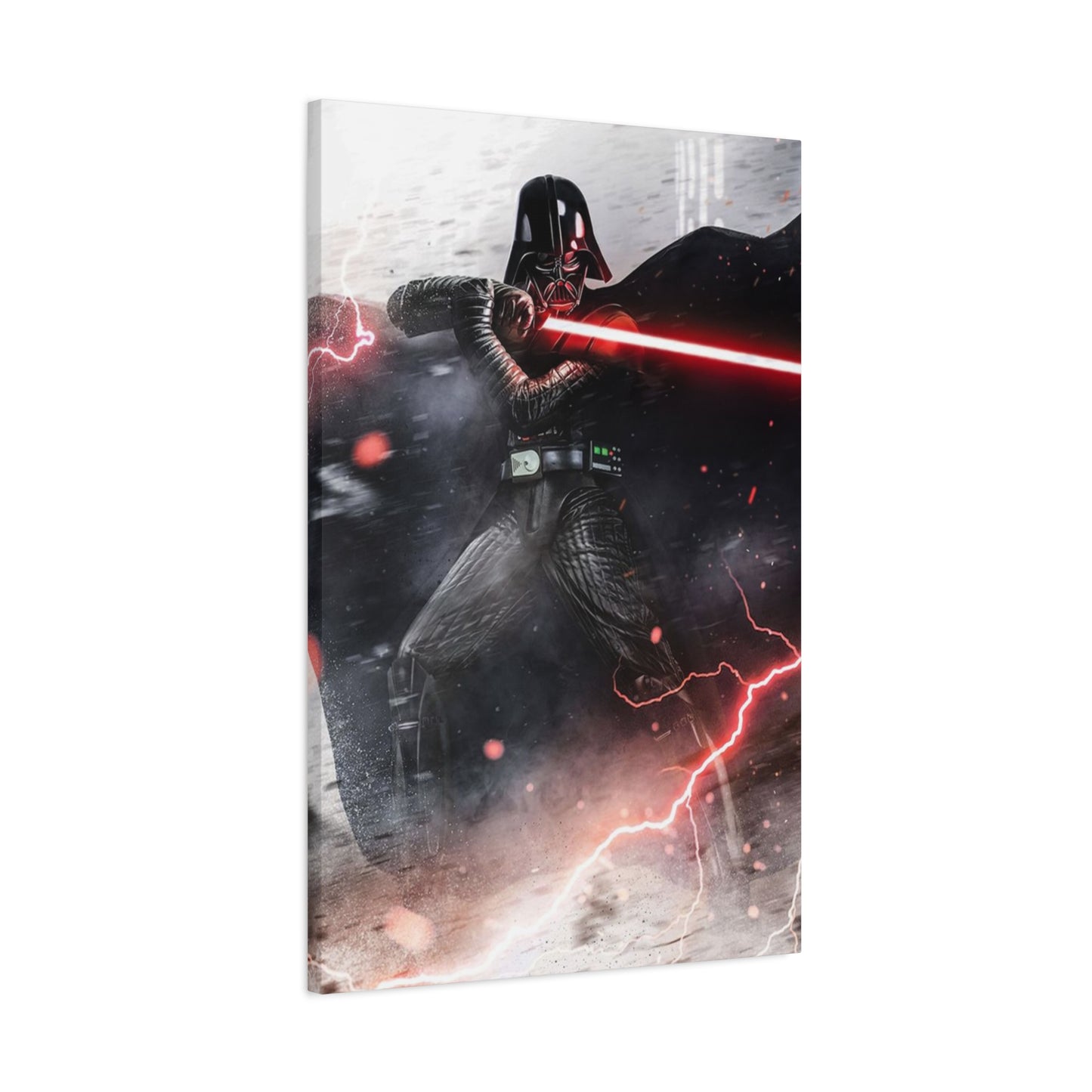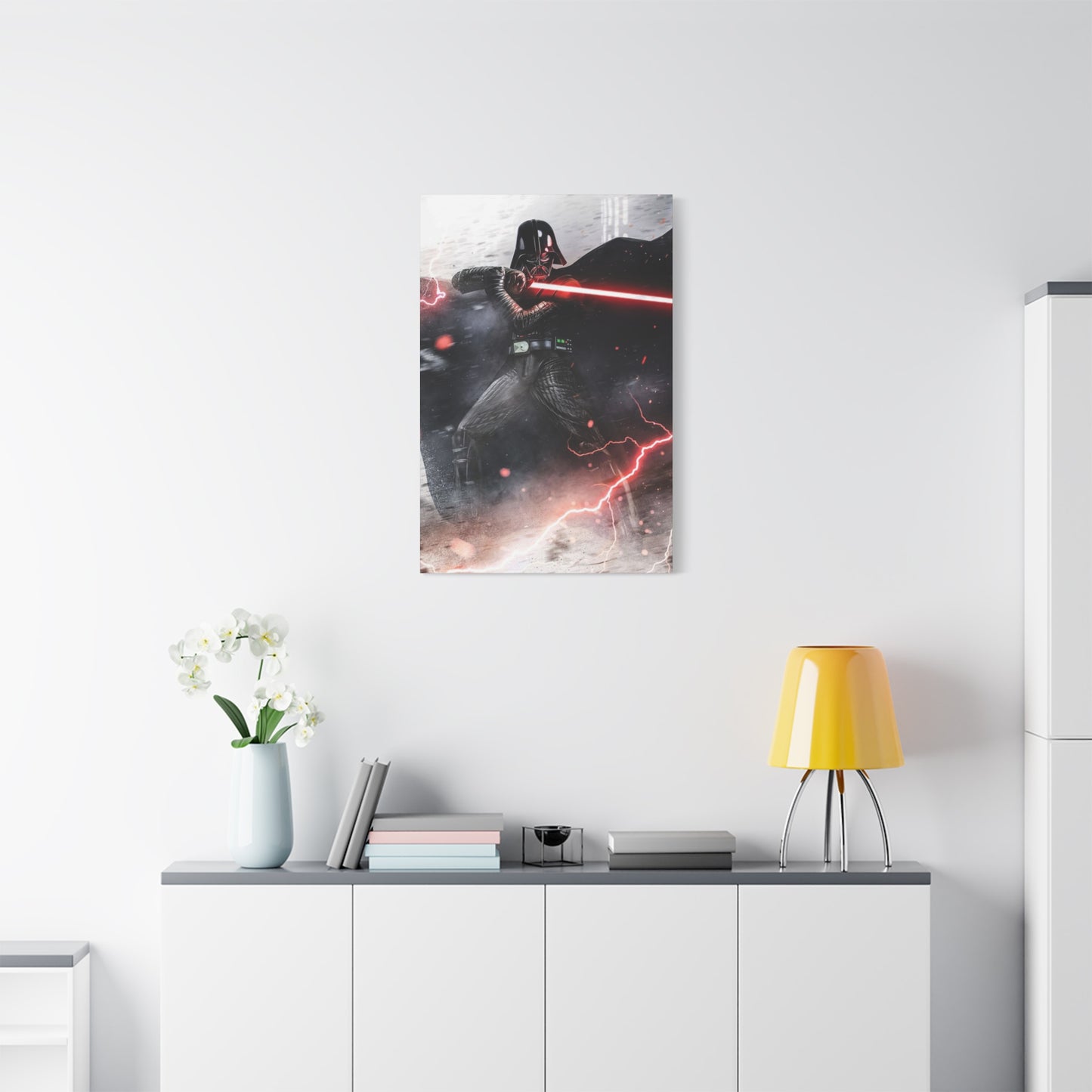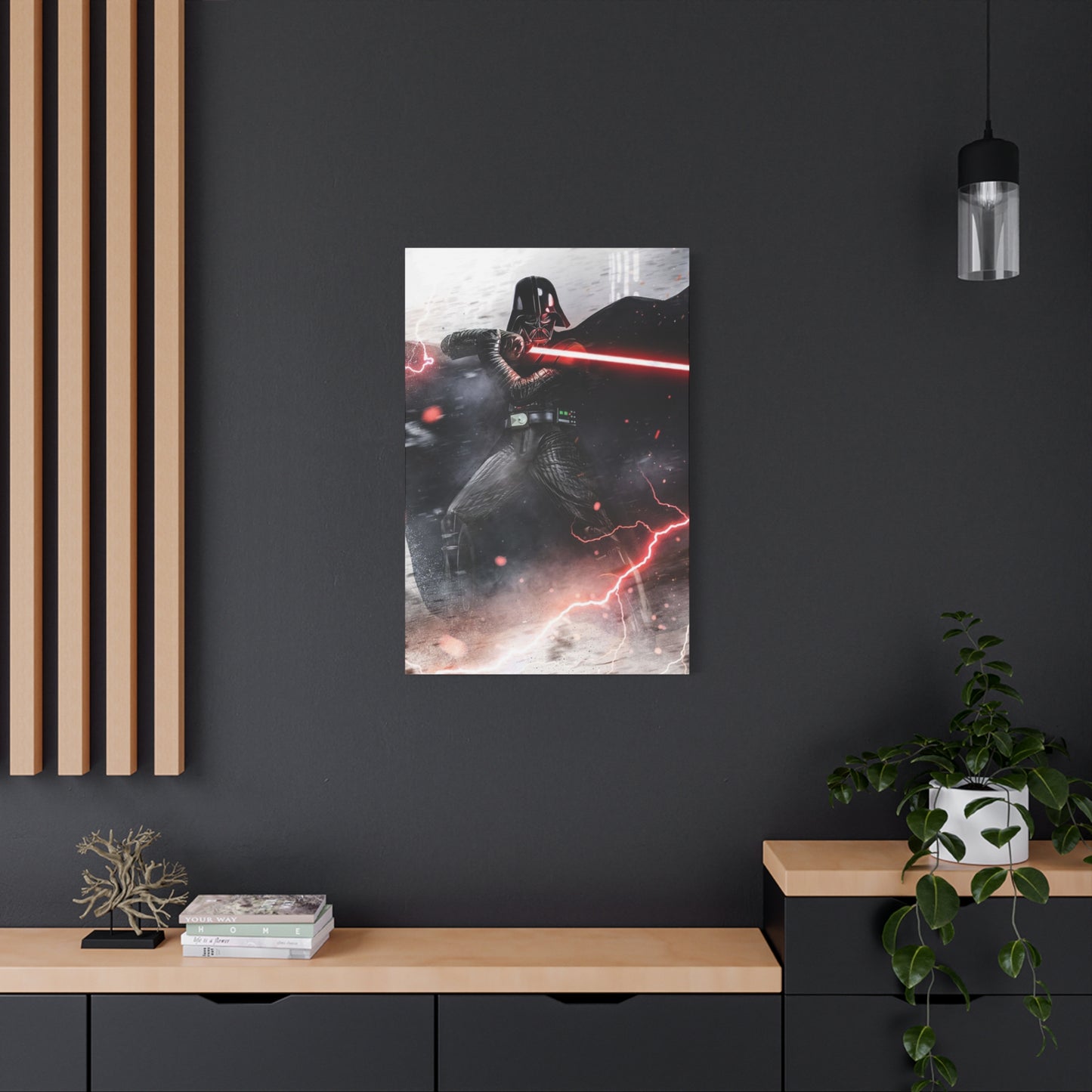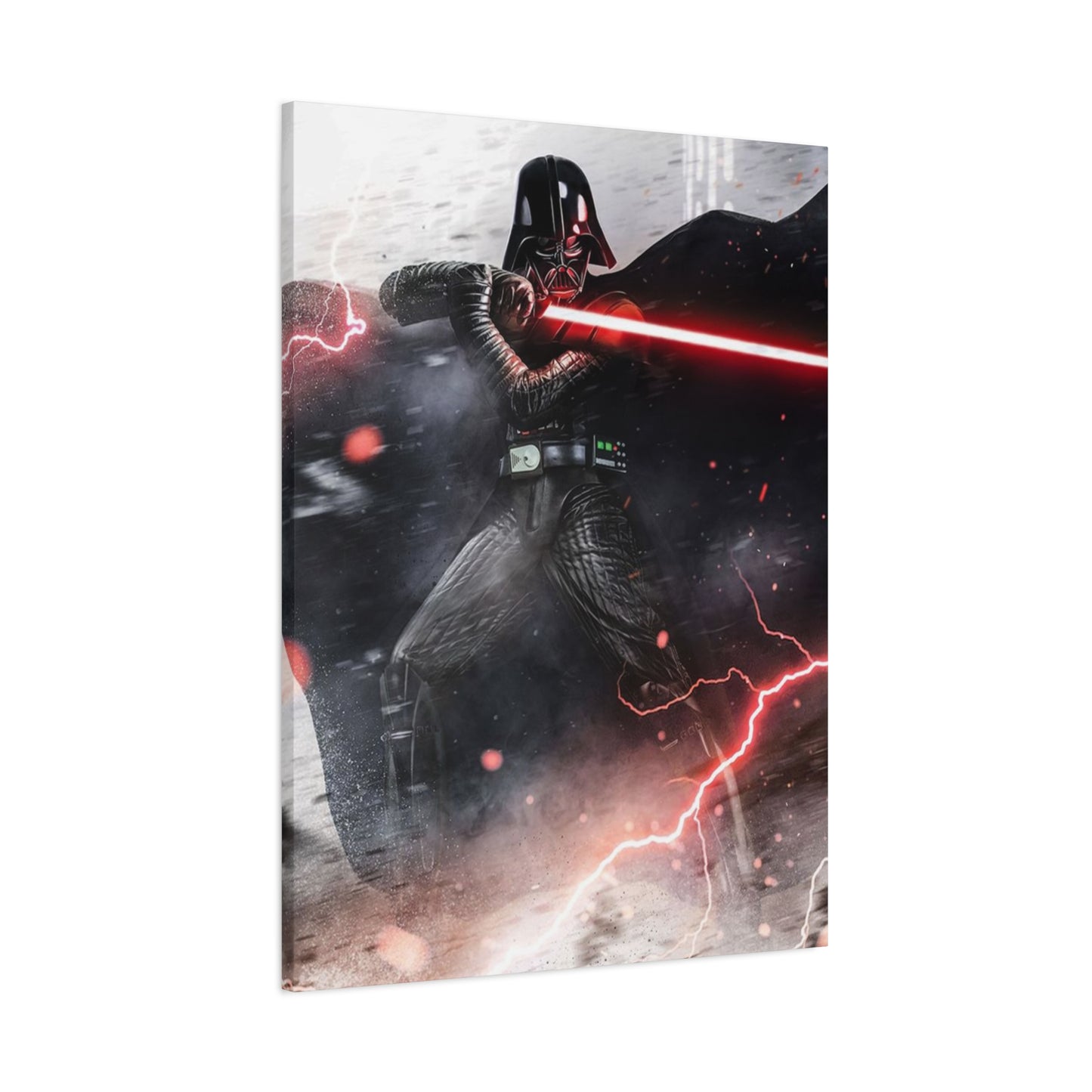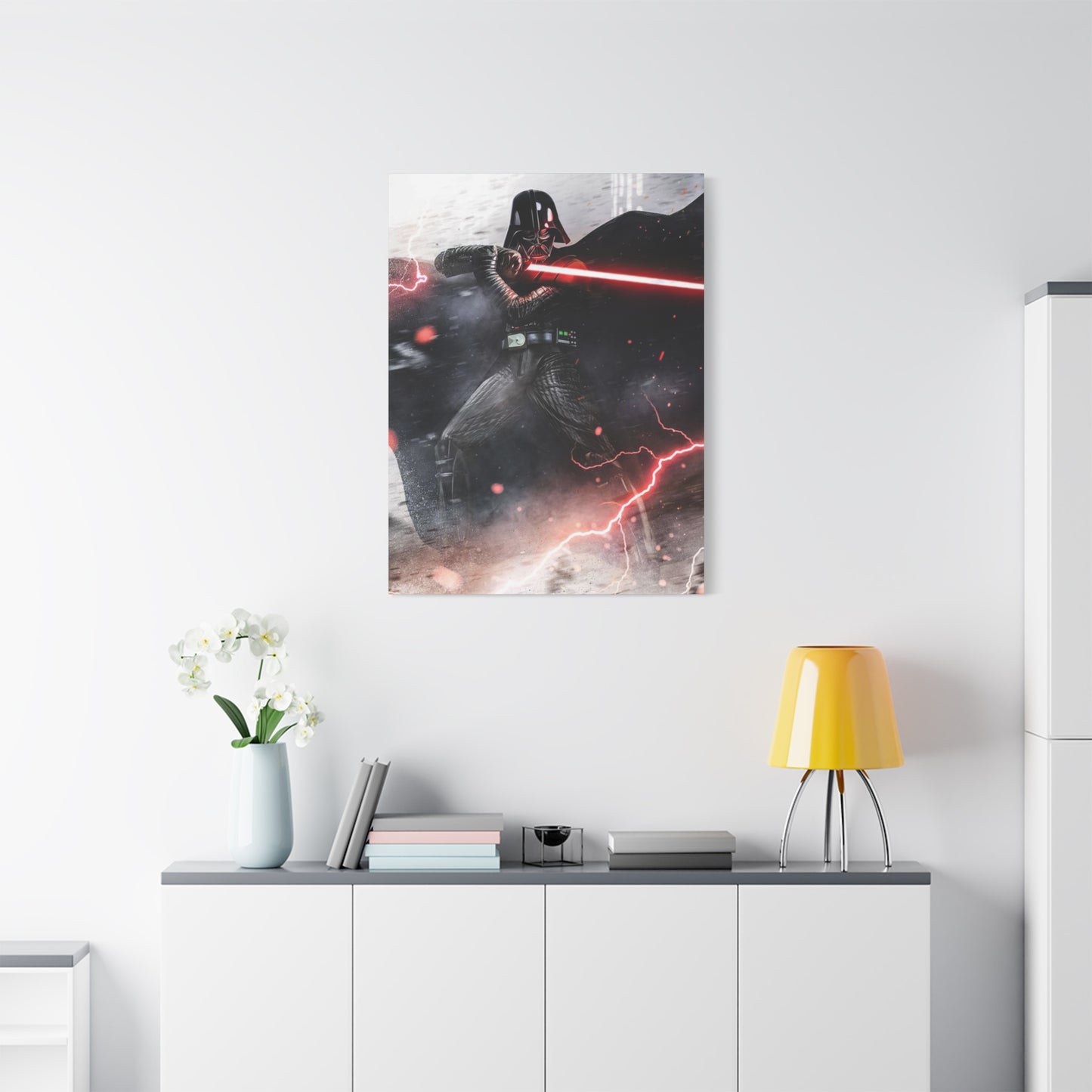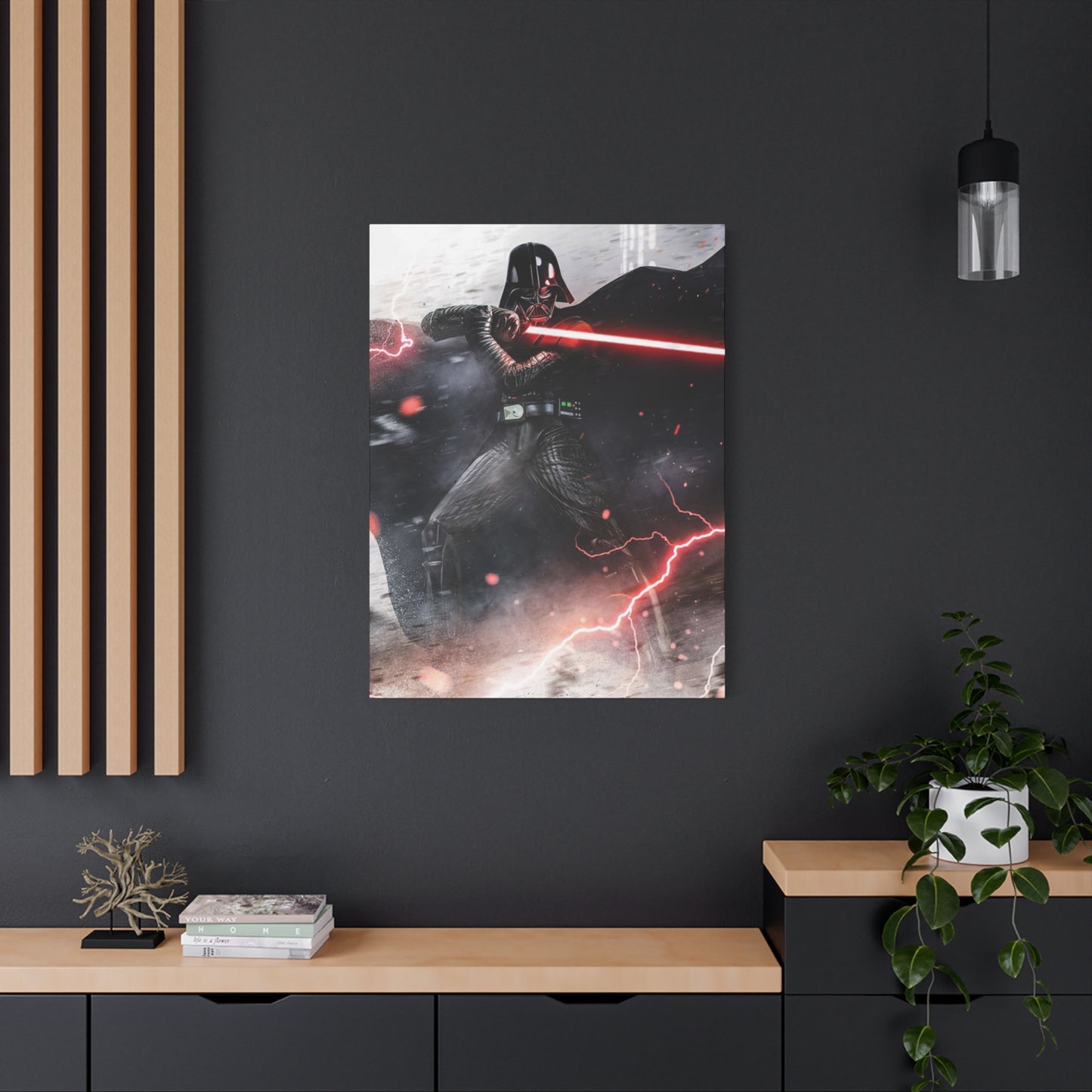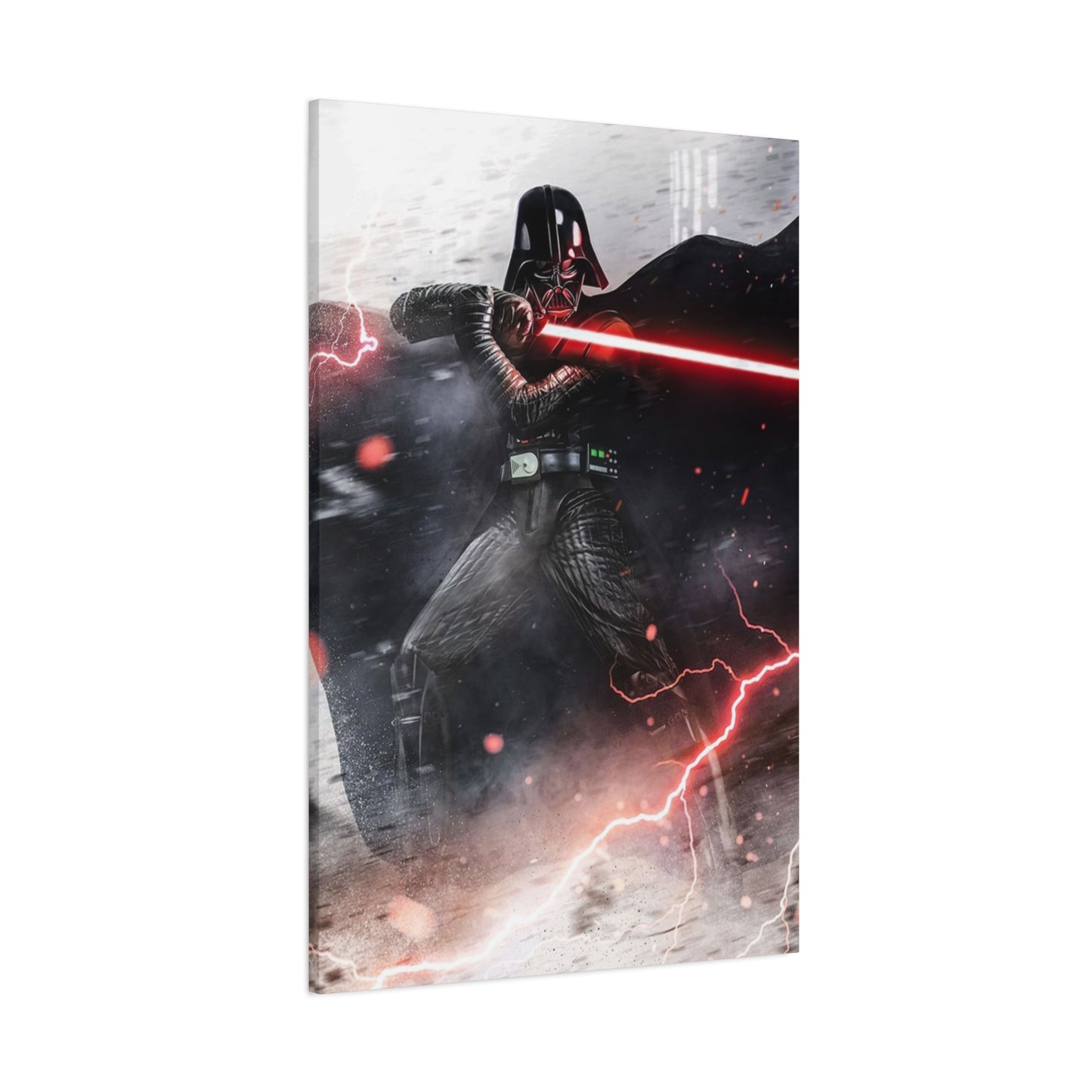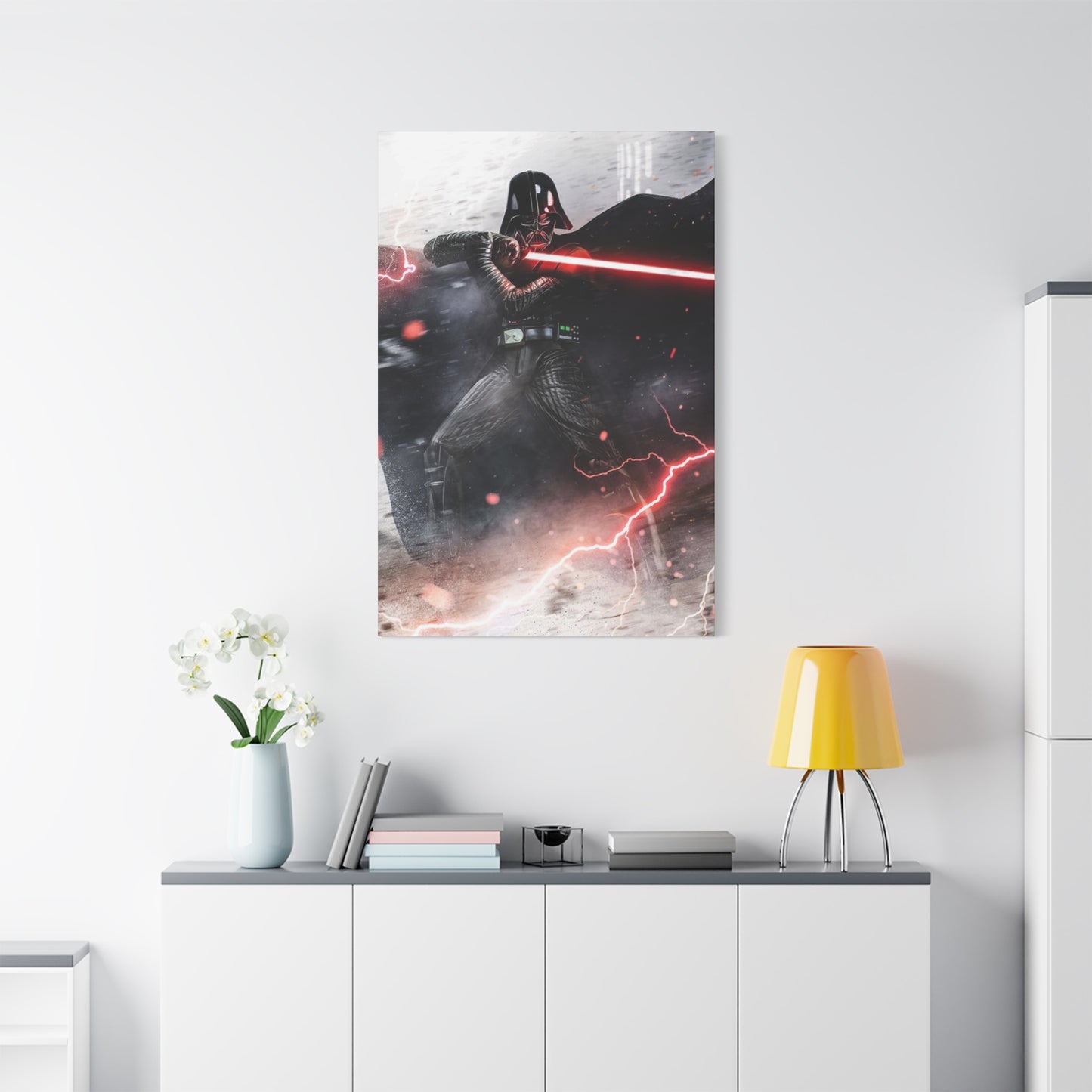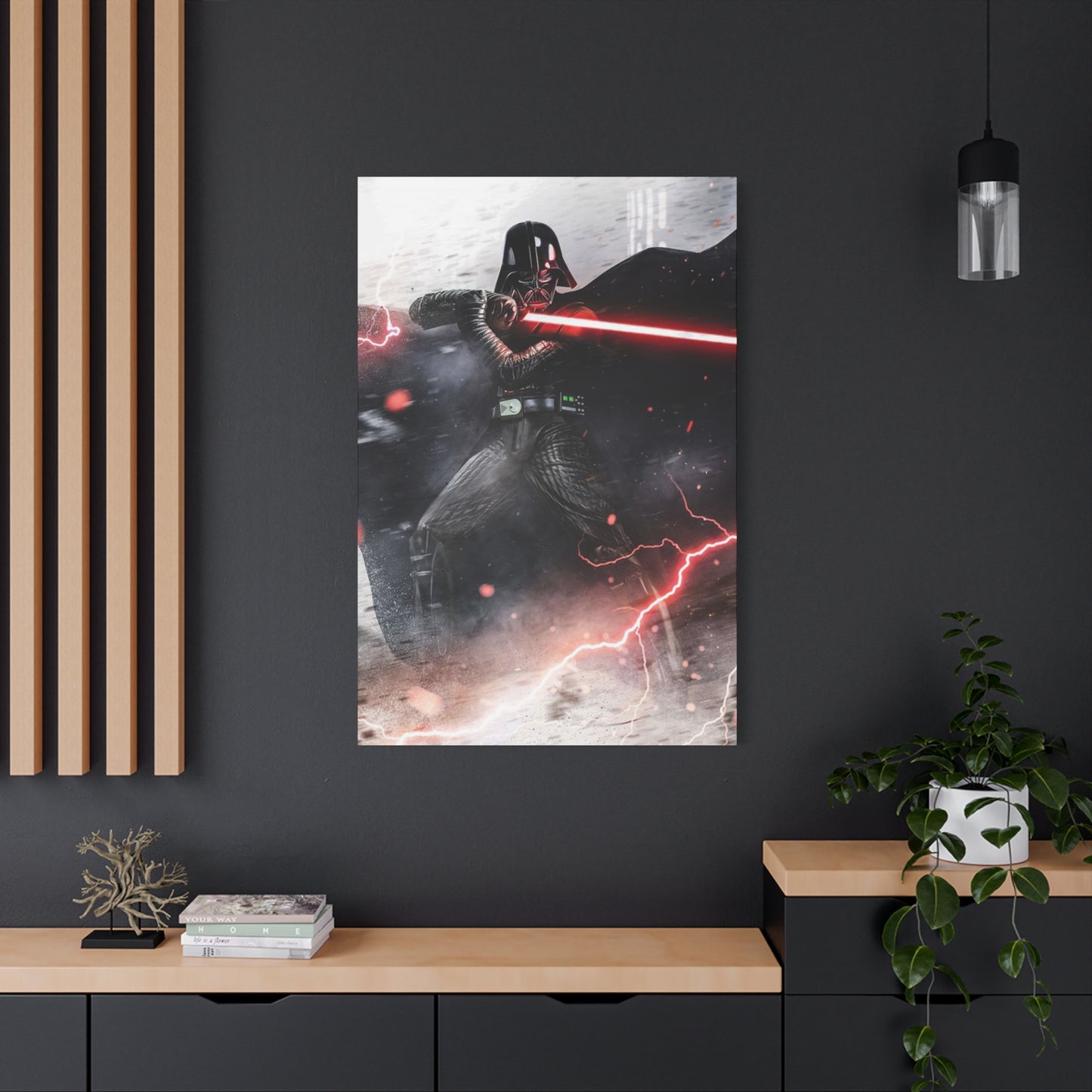Designing a Star Wars-Inspired Room: The Role of Lightsaber Wall Art
The galaxy far, far away has captivated audiences for decades, and now you can bring that cosmic energy directly into your home. Lightsaber-themed wall décor represents more than just fan memorabilia—it's a dynamic way to infuse personality, color, and cinematic history into any room. These striking pieces serve as conversation starters while showcasing your passion for one of cinema's most beloved franchises. Whether you're a lifelong enthusiast or newly discovering the saga, incorporating these glowing weapons into your interior design creates an atmosphere that's both nostalgic and contemporary.
The visual impact of these pieces cannot be overstated. The vibrant hues—ranging from the serene blues and greens of the Jedi to the fierce reds of the Sith—create focal points that command attention without overwhelming your existing décor. These artworks work beautifully in various settings, from minimalist apartments to eclectic entertainment rooms, proving that fandom and sophisticated design can coexist harmoniously.
Beyond their aesthetic appeal, these decorative pieces connect you to a larger community of fans worldwide. They represent values like courage, honor, and the eternal struggle between light and darkness—themes that resonate deeply with people across generations. By displaying these iconic weapons on your walls, you're not just decorating a space; you're making a statement about what inspires and moves you.
The versatility of lightsaber-themed artwork means you can adapt it to any room in your home. A child's bedroom becomes an imaginative training ground for young Padawans, while a home office gains an edge of creative energy. Living rooms transform into galleries that celebrate both art and storytelling, and even hallways become corridors worthy of a starship. The key lies in selecting pieces that reflect your personal connection to the saga while complementing your existing color palette and furniture.
Modern printing technology has elevated these decorative pieces to museum-quality standards. High-resolution images capture every detail, from the subtle glow of plasma blades to the intricate designs of lightsaber hilts. Materials range from classic canvas to metal prints, each offering unique benefits in terms of durability, visual impact, and maintenance. This variety ensures that regardless of your budget or style preferences, you'll find options that meet your needs.
The emotional resonance of these pieces extends beyond simple decoration. For many, the saga represents childhood memories of watching episodes with family, heated debates about character motivations, or the thrill of midnight premiere screenings. Displaying these weapons in your home keeps those cherished memories alive and visible, creating daily reminders of moments that shaped your cultural identity. They serve as touchstones to experiences that brought joy, excitement, and wonder into your life.
Collectors particularly appreciate how these artworks can showcase specific moments from the saga. From the legendary duel on Mustafar to the climactic confrontation on the second Death Star, certain scenes have become etched in collective memory. Wall art capturing these moments allows you to curate your own personal gallery of epic storytelling, selecting the scenes that most resonated with you and displaying them with pride.
The market for this type of décor has expanded dramatically in recent years, reflecting both the franchise's continued popularity and the growing acceptance of geek culture in mainstream design. What was once relegated to dorm rooms and game rooms now graces the walls of stylish homes and professional spaces. Interior designers increasingly recognize that personal passions should inform décor choices, leading to more authentic and meaningful living environments.
The Cultural Significance of Lightsabers in Contemporary Interior Design
These elegant weapons from a more civilized age have transcended their origins as movie props to become powerful cultural symbols recognized worldwide. Their distinctive appearance—a beam of pure energy extending from an ornate hilt—makes them instantly identifiable even to casual viewers. This universal recognition contributes to their effectiveness as decorative elements, as they communicate meaning without requiring explanation or context.
The design evolution of these weapons throughout the saga provides rich material for artistic interpretation. Early versions featured simpler designs, while later installments introduced crossguard variations, double-bladed configurations, and unique color combinations. This diversity allows collectors to select pieces that align with specific eras, characters, or aesthetic preferences, creating highly personalized displays that reflect individual tastes.
Psychological research suggests that surrounding yourself with items connected to positive memories and passions contributes to overall well-being and life satisfaction. When you display artwork featuring these iconic weapons, you're creating an environment that reinforces your interests and values. Each glance at these pieces can trigger pleasant associations, reduce stress, and remind you of stories that inspired courage, resilience, and hope.
The color theory behind these decorations deserves particular attention. The spectrum of blade colors available provides opportunities to integrate specific hues into your existing color scheme. Cool blues and greens create calming effects perfect for bedrooms or meditation spaces, while warm oranges and reds inject energy into workout areas or creative studios. Purple variations offer sophisticated middle ground, combining the passion of red with the tranquility of blue.
From an art historical perspective, these pieces represent contemporary fan art—a genre that has gained legitimacy and respect within the broader art world. Talented artists reinterpret these weapons through various styles, from hyperrealistic renderings to abstract interpretations, from vintage poster aesthetics to cutting-edge digital art. This artistic diversity means you can find pieces that align with traditional, modern, or avant-garde sensibilities.
The symbolism embedded in these weapons adds layers of meaning to your décor choices. The Jedi's blue and green blades represent protection, wisdom, and service to others, while the Sith's red emanations symbolize power, passion, and independence. By selecting specific colors and characters, you subtly communicate your values and philosophical leanings to guests who understand the significance.
Commercial success of the franchise has ensured constant innovation in merchandise design. New artistic interpretations regularly emerge, keeping the market fresh and exciting for collectors. Limited edition prints, collaborations with renowned artists, and officially licensed products maintain high standards of quality while offering exclusivity that appeals to serious enthusiasts.
The intergenerational appeal of the saga means these decorative pieces can bridge age gaps within households. Grandparents who saw the original trilogy in theaters, parents who grew up with the prequel era, and children experiencing the sequel trilogy can all find common ground in appreciation for these iconic weapons. This shared enthusiasm makes lightsaber-themed décor an excellent choice for family spaces where multiple generations gather.
Academic studies of fandom culture highlight how displaying franchise-related items serves identity expression functions. Your décor choices communicate aspects of your personality, interests, and worldview to others. In professional contexts, carefully selected pieces can humanize office environments while demonstrating creativity and passion—qualities valued in many industries.
The craftsmanship visible in premium lightsaber artwork reflects broader trends in home décor toward quality over quantity. Rather than filling walls with numerous mediocre pieces, the contemporary approach favors fewer, more impactful selections. A single, stunning representation of crossed lightsabers can serve as a room's anchor, around which other design elements orbit.
Integrating Lightsaber-Themed Artwork into Your Interior Aesthetic
Successfully incorporating these distinctive pieces requires thoughtful consideration of your existing design elements. The most effective approach treats them not as afterthoughts but as integral components of your overall aesthetic vision. Begin by assessing your current color palette, furniture styles, and room functions to determine which types of artwork will enhance rather than clash with your established look.
For minimalist spaces, single-color representations against clean backgrounds work exceptionally well. A solitary blue blade emerging from darkness creates dramatic impact without introducing visual clutter. The simplicity of this approach aligns with minimalist principles while still making a bold statement about your interests and personality.
Maximalist environments, conversely, can accommodate more elaborate compositions featuring multiple weapons, characters, or battle scenes. These busy spaces thrive on visual interest and layered elements, making complex artwork a natural fit. Consider gallery wall arrangements that combine various sizes and orientations, creating a dynamic display that rewards prolonged viewing.
Industrial-style spaces benefit particularly from metal print options that echo the raw, unfinished aesthetic of exposed brick and steel fixtures. The metallic sheen of these prints enhances the futuristic technology represented by the weapons themselves, creating thematic coherence between subject matter and presentation format. Pair these with Edison bulb lighting and reclaimed wood furniture for a cohesive look.
Traditional interiors might seem incompatible with science fiction themes, but thoughtful selection proves otherwise. Vintage-style poster reproductions featuring retro color palettes and classic typography can blend surprisingly well with antique furniture and classic architectural details. The key lies in choosing pieces that reference the saga's historical roots rather than its most contemporary iterations.
Scandinavian design principles emphasizing functionality, simplicity, and connection to nature might initially seem at odds with spaceship-based sagas. However, the clean lines of weapon hilts and the natural energy suggested by glowing blades can actually complement Nordic aesthetics beautifully. Opt for pieces featuring minimalist compositions and muted color palettes to maintain that characteristic sense of calm.
Bohemian spaces characterized by eclectic mixing of patterns, textures, and global influences can easily absorb these science fiction elements. The key to boho integration lies in treating the artwork as another layer in your already complex visual narrative. Surround lightsaber prints with tapestries, plants, and vintage finds to create that signature collected-over-time appearance.
Contemporary design's emphasis on bold colors and geometric shapes makes it perhaps the most natural home for this type of artwork. The strong lines of illuminated blades complement modern furniture silhouettes, while their vibrant hues provide the color pops that contemporary spaces often feature as focal points. Consider pairing these pieces with neutral walls and furniture to let them truly shine.
Transitional style, which bridges traditional and contemporary aesthetics, offers flexibility in how you incorporate these pieces. Choose artwork with classic framing techniques but modern subject matter treatment, or pair vintage-inspired poster designs with sleek, modern furniture. This balanced approach allows you to express your fandom without committing fully to theme room territory.
Rustic and farmhouse styles might seem unlikely candidates for science fiction décor, but creative approaches can make it work. Weathered wood frames around canvas prints create tactile contrast with the smooth, futuristic weapons depicted. The juxtaposition of old and new, natural and technological, can produce surprisingly compelling results when executed with care.
Lighting plays a crucial role in showcasing these pieces effectively. Many feature glowing elements that benefit from strategic illumination. Picture lights, track lighting, or even LED strips installed behind the artwork can enhance the luminous quality of the weapons depicted, making them appear to emit their own light. This technique works especially well with pieces featuring darker backgrounds.
Scale considerations ensure proper visual impact. Measure your available wall space carefully and select appropriately sized pieces. A common mistake involves choosing prints that are too small for the wall, leaving them looking lost and insignificant. As a general rule, artwork should occupy roughly two-thirds to three-quarters of the furniture width beneath it, or stand alone as a statement piece on an otherwise empty wall.
Grouping strategies can amplify impact when you own multiple pieces. Symmetrical arrangements suggest order and balance, appropriate for formal spaces. Asymmetrical groupings create dynamic energy suited to casual areas. Grid patterns work well in modern contexts, while salon-style arrangements fit eclectic spaces. Experiment with different configurations before committing to nail holes.
Frame selection dramatically affects how these pieces integrate with surrounding décor. Black frames offer versatility and modernity, white frames provide clean contrast, wood frames add warmth and tradition, while metal frames emphasize industrial or contemporary vibes. Consider having multiple versions of favorite prints in different frames to rotate seasonally or when redecorating.
The texture of your chosen medium contributes to overall effect. Canvas prints offer classic gallery appeal with subtle texture that adds depth. Metal prints provide sleek, modern finishes with incredible color vibrancy. Acrylic face-mounting creates dimensional, almost three-dimensional effects. Paper prints in quality frames offer traditional presentation that some purists prefer.
Placement height follows standard art hanging guidelines—the center of artwork should sit at eye level, typically 57-60 inches from the floor. In rooms where people primarily sit, lower this slightly to maintain proper viewing angles. Above furniture, leave 4-8 inches of space between the furniture top and frame bottom to create visual connection without actual contact.
Infusing Your Environment with Iconic Energy Through Strategic Placement
The locations you choose for displaying these distinctive artworks significantly impact both the pieces themselves and the rooms they occupy. Each space in your home offers unique opportunities and challenges for incorporating these vibrant, attention-commanding elements into your daily life.
Bedrooms transformed with these decorative elements become personal sanctuaries that reflect your deepest passions. Position a large centerpiece above the bed to create a focal point visible upon waking and before sleep. The colors you choose influence the room's energy—calming blues and greens promote relaxation, while dynamic reds and purples energize the space. For children's rooms, these pieces inspire imagination and adventure, turning ordinary bedrooms into training facilities for future heroes.
Living rooms serve as the heart of most homes, making them prime territory for conversation-starting artwork. A substantial piece above the sofa anchors the seating area while providing visual interest for guests. Consider how the artwork interacts with your television setup—you want complementary elements rather than competing focal points. Gallery walls flanking entertainment centers create balanced compositions that honor both modern technology and timeless storytelling.
Home offices benefit tremendously from inspirational décor that combats the monotony of daily tasks. These iconic weapons represent determination, skill development, and commitment to craft—all valuable reminders during challenging projects or tedious administrative work. Position artwork within your natural sight line from your desk, so glancing up from your screen provides a moment of visual pleasure and psychological refreshment.
Entertainment rooms and media spaces represent obvious locations for these pieces, as they already celebrate leisure activities and cultural consumption. Create immersive environments by combining wall art with complementary elements like replica hilts, character figures, or themed throw pillows. Consider dimmable lighting that can be adjusted for movie viewing while still highlighting your artwork when the room is in use for other purposes.
Hallways and corridors, often neglected in décor planning, transform into gallery spaces with proper attention. These transitional areas can accommodate multiple pieces, creating narrative sequences as one moves through the space. Consider chronological arrangements following the saga's timeline, character-focused progressions, or color-gradated displays that shift from light to dark as you walk.
Dining areas might seem unconventional for science fiction décor, but these pieces can actually enhance the social nature of meals. Artwork provides discussion topics for dinner guests while adding personality to a space that often defaults to generic still life paintings or landscape photography. Choose pieces with colors that complement your dishware and table linens for a cohesive look.
Bathrooms, particularly powder rooms visible to guests, offer surprising opportunities for personality expression through unconventional décor choices. Smaller prints featuring individual weapons or minimalist designs work well in these compact spaces. The unexpected nature of encountering such artwork in this utilitarian space often delights visitors and demonstrates your commitment to carrying themes throughout your home.
Staircases present unique display opportunities due to their vertical orientation and multiple viewing angles. Ascending series of prints can mirror the physical act of climbing, creating metaphorical journeys from darkness to light or novice to master. Ensure proper spacing and alignment so the arrangement looks intentional rather than haphazard.
Basement spaces, often converted into game rooms, home theaters, or teenage hangouts, enthusiastically welcome this type of décor. These informal areas tolerate more experimental and exuberant design choices than main-floor living spaces. Consider going bold with oversized pieces, neon variations, or even multiple walls dedicated to creating an immersive environment.
Outdoor spaces like covered patios or screened porches can accommodate weather-resistant versions of these artworks. UV-resistant inks and protective coatings prevent fading, while appropriate framing keeps moisture from damaging the prints. These exterior applications extend your personal style beyond interior walls and create cohesive flow between indoor and outdoor living areas.
Garage workshops and hobby spaces gain personality and inspiration from well-chosen artwork. These functional areas often lack decorative consideration, remaining stark and uninviting. Adding pieces that reflect your interests makes time spent in these spaces more enjoyable while expressing that creativity and passion extend to all areas of your life.
Guest rooms benefit from décor that reveals something about your household while remaining welcoming to visitors with diverse tastes. These pieces signal hospitality through shared cultural references without overwhelming guests with intensely personal items. Choose universally appealing designs featuring recognizable elements rather than obscure references that might alienate those less familiar with the saga.
Nurseries can incorporate gentler versions of these themes through softly glowing nightlight-style artwork or pastel interpretations of classic scenes. Even young children recognize the basic shapes and colors, making these pieces grow-with-the-child décor that remains relevant through toddlerhood, childhood, and adolescence.
Exercise areas gain motivational energy from artwork depicting action, conflict, and physical prowess. The dynamic nature of lightsaber combat connects metaphorically to the challenges of physical fitness, reminding you during difficult workouts that growth requires struggle and persistence. Position pieces where they're visible from workout equipment for maximum inspirational impact.
Reading nooks and library spaces achieve thematic harmony when decorated with artwork from beloved stories. The narrative nature of the saga complements the literary atmosphere of book-filled spaces, celebrating storytelling across different media. These cozy areas become retreats where you're surrounded by the stories and characters that have shaped your imagination.
Examining the Visual Language of Lightsaber Representations in Wall Décor
These illuminated weapons function as powerful visual symbols that carry multiple layers of meaning within both the saga's narrative and broader cultural contexts. Their representation in wall art taps into this rich symbolic vocabulary, communicating complex ideas through simple, immediately recognizable imagery.
The blade color system establishes the most obvious symbolic framework. Traditional blue sabers represent guardians and peacekeepers, those who use their abilities to protect others and uphold justice. Green variants traditionally belong to those more attuned to spiritual aspects of the energy field, representing wisdom, growth, and connection to nature. These associations make blue and green artwork particularly appropriate for spaces dedicated to reflection, study, or caregiving.
Red emanations immediately signal danger, passion, and transgression of established norms. Within the narrative, these weapons result from synthetic creation processes that reflect their wielders' rejection of natural order in favor of personal power. Artwork featuring these aggressive hues works well in spaces dedicated to intensity—home gyms, competitive gaming areas, or offices where assertiveness serves professional goals.
Purple blades occupy fascinating middle ground, representing individuals who draw from both philosophical extremes. This rare color suggests balance, complexity, and the ability to navigate moral ambiguity without losing oneself to either extreme. Purple artwork suits spaces dedicated to creative work, as creativity often requires accessing both disciplined technique and wild inspiration.
Lesser-known colors like yellow, orange, and white offer additional symbolic possibilities. Yellow connects to scholarly pursuits and guardianship of knowledge, orange suggests negotiation and diplomacy, while white represents purification and new beginnings. These specialized hues allow for nuanced expression of personal values and priorities through your décor choices.
The weapons themselves, beyond their colors, symbolize discipline, training, and mastery. Unlike blasters or other common armaments in that universe, these elegant tools require years of practice to wield effectively. This makes them apt metaphors for any skill development process—artistic, athletic, intellectual, or spiritual. Displaying them in your space subtly affirms your commitment to continuous self-improvement.
Combat stances depicted in action-oriented artwork communicate different energies and attitudes. Defensive postures suggest protection, caution, and reactive approaches to challenges. Aggressive stances indicate initiative, confidence, and willingness to take risks. Static, meditative poses convey contemplation, inner strength, and self-mastery. Select images that reflect the mindset you wish to cultivate in that particular space.
The duality represented by these weapons—equally capable of creation and destruction, healing and harm—reflects fundamental truths about power itself. This thematic richness elevates lightsaber artwork beyond simple fan service, allowing it to function as genuine philosophical statement. Your décor choices can engage with these deeper meanings or simply appreciate the aesthetic appeal—both approaches have merit.
Crossed weapons create symbolism distinct from single blade representations. This configuration suggests conflict, choice, or the meeting of different paths. It can represent internal struggle between different aspects of self, or external conflict between competing values or loyalties. This dynamic tension makes crossed compositions particularly effective in spaces where you make important decisions or engage in strategic thinking.
The hilt designs themselves carry cultural significance within the saga's universe, with different traditions and time periods producing distinctive aesthetic approaches. Ancient weapons feature more ornate craftsmanship, while modern versions tend toward streamlined functionality. By selecting artwork that emphasizes particular hilt styles, you connect your space to specific eras or philosophical traditions within that fictional universe.
Silhouette-based artwork strips away detail to focus on pure form and gesture. These minimalist representations emphasize the iconic nature of these weapons—they remain instantly recognizable even when reduced to basic shapes. This approach works particularly well in modern or minimalist spaces where excessive detail might feel out of place.
Neon interpretations transform these weapons into glowing signs reminiscent of urban nightlife and contemporary art movements. This stylistic choice bridges the gap between science fiction subject matter and current design trends, making the artwork feel fresh and relevant rather than dated or overly nostalgic. Neon versions work especially well in entertainment spaces or anywhere seeking a vibrant, energetic atmosphere.
Watercolor treatments offer softer, more contemplative takes on these typically dynamic subjects. The dreamy quality of watercolor renders battles as memories rather than present conflicts, introducing nostalgia and gentleness to imagery that could otherwise feel aggressive or overwhelming. This approach suits bedrooms, nurseries, or any space where calmness takes priority over excitement.
Geometric and abstract interpretations demonstrate how these iconic forms can be distilled into pure design elements. Angular compositions emphasizing lines and angles connect to the weapons' energy-based nature, while circular arrangements reference the philosophy of balance central to the saga. These artistic approaches appeal to viewers who appreciate both the source material and contemporary art movements.
Vintage poster styles referencing 1970s and 1980s design aesthetics tap into nostalgia for the saga's origins. These retro treatments celebrate the franchise's history while creating artwork that complements mid-century modern and vintage-inspired interiors. The weathered, aged appearance of these designs adds character and suggests well-loved cultural artifacts rather than recent commercial products.
Photorealistic renderings showcase contemporary digital art capabilities, creating images so detailed they rival actual photographs. These technically impressive pieces appeal to viewers who appreciate artistic skill and craftsmanship as much as subject matter. The hyperreal quality makes the fictional weapons feel tangible and present in your space.
Celebrating Fandom Through Thoughtfully Curated Living Environments
Creating spaces that honor your passions requires balancing enthusiasm with aesthetic sensibility. The most successful geek-friendly interiors avoid theme park excess while still clearly communicating the inhabitant's interests and values. This delicate balance allows you to surround yourself with things you love without sacrificing sophistication or adult sensibilities.
The evolution of fandom from niche interest to mainstream cultural force has dramatically expanded options for incorporating beloved franchises into home décor. What previous generations might have hidden away or confined to specialized spaces, contemporary enthusiasts can display proudly throughout their homes. This cultural shift reflects broader acceptance of diverse interests and recognition that passions should inform rather than contradict design choices.
Quality considerations become paramount when selecting pieces for permanent display. Cheap posters and mass-produced prints serve well as temporary décor, but investing in higher-quality artwork signals genuine appreciation for both the subject matter and your living environment. Museum-quality prints on premium substrates with archival inks ensure your investment maintains its appearance for years or decades.
Curation skills separate sophisticated fan spaces from adolescent bedrooms covered in every available poster. Selective acquisition of meaningful pieces creates more impactful displays than comprehensive but indiscriminate collections. Consider which specific moments, characters, or themes resonate most deeply with you, then seek out artwork that captures those particular elements with artistic excellence.
Rotating displays prevent visual fatigue while accommodating growing collections. Seasonal rotations keep your space feeling fresh, while thematic changes might align with rewatching marathons or new installments. This approach also allows you to own more pieces than you can simultaneously display, building a personal archive that you curate into different configurations over time.
Mixing official merchandise with independent artist interpretations adds depth and uniqueness to your collection. While officially licensed products ensure quality and authenticity, independent creators often bring fresh perspectives and artistic innovation to familiar subjects. Supporting artists through purchases of their work also contributes to vibrant creative communities that keep fandoms dynamic and evolving.
Complementary elements extend your theme beyond wall art without overwhelming the space. Subtle touches like themed throw pillows, appropriate color schemes in paint and furniture, or carefully selected decorative objects create cohesive environments. The key lies in restraint—you're creating a home, not a shrine, so each thematic element should feel intentional rather than compulsive.
Personal storytelling through décor choices makes spaces more meaningful and engaging. Each piece in your collection can represent specific memories, relationships, or personal milestones connected to the franchise. Maybe you watched certain episodes with your grandfather, or saw a particular film on your first date with your spouse. These personal connections transform commercial products into autobiographical elements.
Social spaces benefit from conversation-starting pieces that invite guests to engage. Interesting artwork provides natural discussion topics, helping ease social awkwardness and revealing shared interests. When guests recognize and respond enthusiastically to your displayed artwork, you've identified kindred spirits with whom you can connect more deeply.
Professional contexts require more subtle approaches to fandom expression. Home offices visible during video calls should feature tasteful, sophisticated pieces that communicate passion without compromising professional credibility. Smaller prints, minimalist designs, or high-quality artistic interpretations work better than enormous character posters in these situations.
Children's spaces allow for more exuberant decoration while still maintaining design coherence. Involving children in selecting which pieces to display teaches them about personal expression and creating environments that reflect their identities. As children grow, their spaces can evolve from bright, playful representations to more sophisticated interpretations that match maturing tastes.
Couples navigating different interests must find compromises that honor both partners' preferences. Shared spaces might feature universally appealing designs, while individual areas like home offices allow for more personal expression. Communication about aesthetic priorities prevents resentment and ensures both people feel represented in their shared home.
Rental limitations require creative solutions for displaying artwork without violating lease agreements. Damage-free hanging systems, removable adhesive strips, and leaning arrangements allow renters to personalize spaces without risking security deposits. These temporary solutions actually offer advantages in flexibility and experimentation.
Budget consciousness doesn't preclude creating impressive displays. Print-on-demand services offer affordable access to countless designs, while sales and secondary markets provide opportunities to acquire higher-end pieces at reduced costs. Starting with one or two quality pieces and adding gradually creates better results than immediately purchasing numerous mediocre items.
Documentation of your space through photography allows you to share your creation with online communities and track your décor's evolution over time. Before-and-after photos demonstrate the transformative power of thoughtful decoration, while detail shots highlight particular pieces or arrangements you're especially proud of.
Developing an Atmospheric Presence Through Dynamic Color Applications
The chromatic intensity of lightsaber-themed artwork offers unparalleled opportunities to introduce bold color into interior spaces. These pieces don't simply add decoration—they fundamentally alter a room's color palette and emotional atmosphere through their vivid, luminous hues.
Color psychology provides useful frameworks for understanding how different blade colors affect space perception and occupant mood. Cool tones like blue and green generally promote calm, focus, and relaxation. These make excellent choices for bedrooms, home offices, or meditation spaces where tranquility supports the room's intended function. The specific shade matters—deeper blues suggest contemplation and stability, while brighter variants feel more energetic and youthful.
Warm colors like red, orange, and yellow stimulate energy, passion, and activity. These work well in social spaces like living rooms and dining areas, exercise rooms, or creative studios where you want to encourage dynamic engagement. However, these intense hues can overwhelm if not balanced with neutral elements in furniture and wall colors. The key lies in letting the artwork provide the color punch while surroundings remain subdued.
Contrast levels between artwork and surrounding walls dramatically impact visual effect. High contrast—like red sabers against white walls—creates drama and ensures the artwork dominates attention. Low contrast—such as blue tones against gray walls—produces more subtle, sophisticated results where the piece integrates smoothly rather than demanding focus. Consider which approach serves your goals for each specific space.
Complementary color schemes create visual vibrance through strategic opposition. If your furniture features warm tones, blue or green artwork provides refreshing contrast. Conversely, spaces dominated by cool grays and blues benefit from warm amber or red pieces that inject energy. This principle of balance prevents spaces from feeling monotonous or overwhelming.
Analogous schemes using adjacent color wheel positions create harmonious, cohesive looks. Pairing purple-hued artwork with blue furniture and red accent pieces, for instance, produces sophisticated progression that feels intentional and designed. This approach works particularly well in formal spaces where you want refined elegance rather than dramatic impact.
Monochromatic schemes featuring various shades of a single color create calm, unified environments. A room featuring navy walls, light blue furniture, and blue-bladed lightsaber artwork demonstrates sophisticated restraint while still clearly communicating color preference. This approach prevents visual chaos in smaller spaces that might feel cluttered with too many competing hues.
Lighting conditions in your space affect how artwork colors appear throughout the day. Natural light renders colors most accurately but changes as the sun moves across the sky. Artificial lighting—particularly warm incandescent bulbs—can shift color perception significantly. Test artwork in actual placement locations at different times before making final decisions.
Seasonal color adjustments keep spaces feeling fresh throughout the year. Lighter, brighter pieces suit spring and summer, while deeper, richer tones feel appropriate for fall and winter. If you own multiple pieces, rotating them seasonally maintains visual interest while preventing your décor from feeling stale.
Cultural color associations vary across different societies, adding layers of meaning to your choices. Western cultures typically associate blue with masculinity and calm, green with nature and growth, red with passion and danger. Understanding these cultural codes helps you communicate intended meanings through your décor selections.
Age-related color preferences suggest different approaches for various household members. Children typically prefer bright, saturated colors, while adults often gravitate toward more muted, sophisticated palettes. Finding middle ground when decorating shared spaces requires compromise and creativity.
The quantity of color matters as much as the specific hues chosen. A single vibrant piece in an otherwise neutral room creates a focal point without overwhelming. Multiple colorful pieces require careful arrangement to prevent visual cacophony. As a general principle, increase the amount of neutral elements as you add more colorful artwork.
Metallic accents in silver, gold, or copper frames enhance the technological nature of these energy weapons while adding luxury touches to your décor. The reflective quality of metallic elements plays with light in interesting ways, creating dynamic visuals that shift as you move through the space or as lighting conditions change.
Background colors within the artwork itself deserve consideration alongside blade colors. Solid black backgrounds create dramatic, high-contrast presentations that emphasize the glowing weapons. Lighter backgrounds feel more approachable and casual while still allowing the colored blades to stand out. Detailed backgrounds showing battle scenes or locations provide narrative context but compete for attention with the weapons themselves.
Gradient effects within blade representations add depth and movement to static images. Subtle color shifts from hilt to tip suggest energy flow and motion, making the weapons feel more alive. These nuanced details distinguish premium artwork from basic reproductions.
Special effects like lens flares, motion blur, or light reflections enhance the sense that these weapons emit actual light. Skilled artists incorporate these elements naturally, creating images that feel dynamic despite their two-dimensional nature. These technical achievements contribute to artwork's overall impact and value.
Selecting Appropriate Pieces to Enhance Your Personal Environment
Navigating the vast marketplace of available artwork requires developing evaluation criteria that help you identify pieces worthy of your walls and investment. Not all lightsaber-themed artwork achieves the same quality level, and understanding key differentiators empowers you to make informed purchases that you'll appreciate for years.
Resolution and print quality form the foundation of any visual artwork. Examine product specifications for DPI ratings—300 or higher ensures sharp, clear images even at large sizes. Pixelation and blurriness immediately identify inferior products that will disappoint upon arrival. Reputable sellers provide close-up previews allowing you to assess image quality before purchasing.
Color accuracy varies significantly between printers and substrates. Read reviews mentioning whether received products match displayed colors, as some sellers use enhanced digital mockups that don't reflect actual print appearance. If possible, order sample prints before committing to large or expensive pieces.
Substrate options dramatically affect final appearance, longevity, and price. Canvas remains popular for its classic gallery association and slight texture that adds depth. However, canvas prints require proper stretching and mounting to avoid sagging over time. Metal prints offer incredible vibrancy and durability but carry higher costs. Paper prints in quality frames provide traditional presentation, while acrylic mounts create modern, dimensional effects.
Framing quality separates amateur from professional presentations. Cheap frames detract from even excellent artwork, while quality framing enhances mediocre prints. Consider the weight and construction of frames—solid wood or metal frames last longer and maintain alignment better than hollow plastic alternatives. Removable backing allows for easy print changes without replacing entire frames.
UV protection prevents fading from sunlight exposure, crucial for maintaining your investment's appearance. Quality glass or acrylic glazing blocks harmful UV rays while allowing visible light through. This protection becomes especially important for pieces placed near windows or in rooms receiving significant natural light.
Artist attribution and licensing status affect both legal and ethical dimensions of purchases. Official merchandise ensures artists and license holders receive appropriate compensation for their creative work. However, fan art from independent creators can offer unique perspectives and support working artists. Be wary of sellers offering suspiciously cheap versions of clearly professional artwork, as these may be unauthorized reproductions.
Size appropriateness requires measuring your intended space and visualizing scale before ordering. Many sellers provide room mockups or AR visualization tools showing how different sizes appear in typical spaces. As mentioned earlier, artwork should generally occupy two-thirds to three-quarters of the furniture width beneath it, or work as standalone statement pieces on empty walls.
Style consistency within collections creates cohesive galleries when displaying multiple pieces together. If your first purchase features photorealistic rendering, subsequent additions in similar styles produce more harmonious groupings than mixing radically different artistic approaches. However, eclectic combinations can work if unified by color palette, subject matter, or framing choices.
Limited editions and signed prints carry additional value for serious collectors beyond their purely decorative function. These pieces may appreciate over time, particularly if the artist gains prominence. Authentication certificates and edition numbering establish provenance and exclusivity.
Return policies and satisfaction guarantees provide important consumer protections when purchasing sight-unseen. Reputable sellers allow returns or exchanges if products don't meet expectations or arrive damaged. Read the fine print regarding restocking fees, return shipping costs, and time limitations.
Customer reviews offer invaluable insights into product quality, shipping reliability, and seller responsiveness. Look for detailed reviews with photographs showing received products in home settings rather than generic five-star ratings. Patterns in complaints about color accuracy, print quality, or customer service reveal red flags worth heeding.
Price comparisons across multiple sellers help identify fair market values and spot suspiciously cheap offerings that likely indicate inferior quality or questionable business practices. Remember that extremely low prices often signal problems—quality materials, printing, and shipping carry inherent costs that legitimate sellers must recoup.
Shipping considerations become especially important for glass-framed pieces vulnerable to damage during transit. Verify that sellers use appropriate packaging with corner protectors, bubble wrap, and sturdy boxes. Insurance coverage protects against loss or damage, though filing claims requires documentation through photographs and prompt communication with carriers.
Customization options allow you to tailor pieces to your specific needs. Some sellers offer sizing adjustments, color modifications, or even commissioned original artwork incorporating your specifications. These personalized pieces carry extra meaning while ensuring perfect fit with your space.
Local artists and print shops provide alternatives to online marketplaces, offering benefits like seeing products in person before purchasing, supporting your community's creative economy, and establishing relationships with creators for future commissions. Many artists attend conventions or craft fairs where you can view their work directly.
Final Thoughts
When designing a Star Wars-inspired room, there’s no better way to evoke the heart-pounding excitement and energy of the saga than by incorporating Lightsaber Wall Art. These iconic weapons, symbolizing the battle between good and evil, the Jedi and the Sith, are instantly recognizable and hold profound cultural significance. The role of lightsaber wall art in your space is more than just decoration—it acts as a focal point that infuses the room with the power, mysticism, and adventure of the Star Wars universe. Whether you’re creating a dedicated Star Wars room or adding subtle nods to the franchise in your home, lightsaber wall art brings an exciting, dynamic energy that amplifies the immersive experience.
Lightsabers, in all their forms, are iconic elements of Star Wars lore, representing the conflict, growth, and legacy of its characters. From Luke Skywalker’s green blade to Darth Vader’s menacing red saber, each lightsaber tells a unique story. Featuring these symbols of power and identity on your walls is an opportunity to bring the saga to life. A lightsaber on the wall doesn't just remind us of thrilling battles—it's a connection to the Jedi Code, to the struggle of the Rebel Alliance, and to the philosophies that shape the Star Wars universe. It’s the physical manifestation of heroism, strength, and the eternal conflict between light and dark.
The versatility of Lightsaber Wall Art is one of its greatest strengths. Whether you want to create a vibrant, full-on Star Wars experience or subtly incorporate elements of the galaxy into your design, lightsaber art works beautifully in both settings. For a more dramatic, full-on approach, you can design an entire Star Wars room with lightsaber-themed pieces—such as multiple cross-mounted sabers, or a central art piece showing iconic duels between characters like Obi-Wan and Anakin, Rey and Kylo Ren, or Yoda and Count Dooku. This immersive approach brings the action and thrill of the films into the room, creating an exciting and powerful atmosphere for fans of all ages.
On the other hand, if you’re looking for a more minimalist, subtle nod to the Star Wars universe, lightsaber wall art can still play an integral role. A sleek, simple silhouette of a lightsaber in your living room, bedroom, or office adds sophistication while maintaining a connection to the epic saga. These designs often feature the glowing blades in striking colors against a stark black background or sleek metallic accents, creating a modern and stylish piece of art that complements your existing decor. This understated approach allows you to celebrate Star Wars without overwhelming the space, offering an elegant way to inject some galactic charm into your room.
Lightsaber wall art also brings a sense of movement and energy into the space. The vibrant colors of the sabers, especially when depicted in battle stances or crossed in dramatic poses, add a dynamic feel to your room. The glowing effect, often used in digital art representations of lightsabers, can create a visually captivating glow, enhancing the mood of the room, whether it’s in a cozy home theater or a study space where you feel inspired. This ability to add energy and vibrancy is part of what makes lightsaber wall art such a powerful design choice.
Incorporating lightsaber art into a Star Wars-inspired room also helps personalize the space. For fans, it becomes more than just an aesthetic choice—it’s a way to showcase your connection to the saga and express which characters or themes resonate most with you. Whether you’re drawn to the classic Jedi ideals, the fearsome power of the Sith, or the visual appeal of specific characters’ sabers, your choice of lightsaber art becomes a reflection of your Star Wars journey. The ability to display your favorite moments, colors, or duels can turn the room into a space that tells your own Star Wars story.
In conclusion, Lightsaber Wall Art plays a pivotal role in designing a Star Wars-inspired room. It’s a visually striking, emotionally charged element that elevates the room’s atmosphere, whether you go for an immersive, themed experience or prefer a more subtle, refined tribute to the saga. Lightsabers symbolize not just a weapon, but a philosophy—one of balance, strength, and the constant struggle between light and darkness. By adding lightsaber art to your space, you bring that timeless conflict and its heroic ideals into your home, creating a room that’s as powerful and inspiring as the Star Wars universe itself.




















